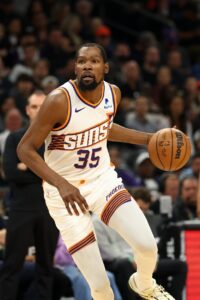The NBA offseason has begun and so has free agency — sort of. For the first time this year, teams are permitted to begin negotiating with their own free agents one day after the NBA Finals end rather than having to wait until June 30 to do. Clubs still aren’t allowed to talk to rival teams’ free agents until June 30, and most contracts can’t be officially signed until July 6, but it’s possible some free agents will reach tentative agreements prior to the typical opening on the free agent period.
Listed below are our top 50 free agents for the 2024/25 NBA season.
Our rankings are essentially a reflection of what sort of contract we expect each player to sign, with our focus leaning more toward market value than on-court value. The rankings take into account both a player’s short-term and long-term value — if we were to consider solely a player’s worth for 2024/25, certain veterans would place higher, while younger free agents with upside would be ranked lower.
Players who have contracts for next season aren’t listed here, even if they’re candidates to be waived (Chris Paul and his $30MM non-guaranteed salary, for instance).
In addition to the players listed below, there are plenty of other free agents available this summer. You can check out our breakdowns of free agents by position/type and by team for the full picture.
Here are our top 50 free agents of 2024:
(Note: We’ve included news of contract agreements for the players who reached deals before the official start of free agency on June 30.)
1. Paul George, F, Clippers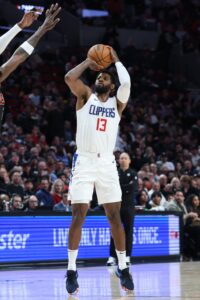
George is in a perfect position to cash in this summer, with his current team – the Clippers – feeling pressure to retain him as it moves into its new Inglewood arena and looks to keep its window of contention propped open, while the contender with the most cap room – Philadelphia – has made the star forward its top target. When teammate Kawhi Leonard signed a three-year, $152MM extension in January, it appeared George might have to “settle” for a similar deal. Now a four-year, maximum-salary contract worth at least $212MM (or up to $221MM if he re-signs in L.A.) appears entirely realistic for George, even at age 34.
2. Tyrese Maxey, G, Sixers (RFA)
After just missing out an All-NBA team this season, Maxey didn’t qualify for the “Rose Rule” max that would have started at 30% of the 2024/25 salary cap instead of 25%. That will make the Sixers’ decision on the 23-year-old pretty easy. It’s hard to envision a scenario in which they don’t offer this season’s Most Improved Player a five-year, maximum-salary deal that will pay him a projected $204MM. Maxey’s cap hold is only around $13MM, so Philadelphia will use up all its cap room before using his Bird rights to go over the cap to sign the ascendant guard to a deal starting at $35MM+.
3. Pascal Siakam, F, Pacers
The Raptors traded Siakam in January in part because they didn’t appear comfortable committing to him on another long-term, maximum-salary deal. The Pacers were willing to give up three first-round picks for the two-time All-NBA forward because they’re more comfortable with that idea, especially after he led the team in playoff scoring en route to an appearance in the Eastern Conference finals. Siakam doesn’t fit the mold of a traditional star, but he provides positive value in a lot of different ways and should have several more prime years left in him as he enters his age-30 season. I’m not sure the Pacers will go up to five guaranteed years, but Siakam’s deal will be one of the summer’s largest.
Update: Siakam reportedly intends to sign a four-year, maximum-salary contract with the Pacers.
4. LeBron James, F, Lakers
You can certainly make the case that James, a four-time MVP and one of the NBA’s all-time greats, belongs at the top of this list, given that he’ll receive another maximum-salary contract this offseason unless he decides to accept a pay cut. But the three players above him are also considered good bets to sign for the max or close to it, so their overall paydays this summer figure to surpass that of James, who is ineligible for a deal longer than three years due to the Over-38 rule. James will turn 40 in December and may not even want to play for three more years, but after averaging at least 25 points per game for a 20th straight season, I expect the Lakers – and any other suitor – to give him whatever deal he asks for.
5. OG Anunoby, F, Knicks
If there were a version of Anunoby who was a lock to play 75 games every year, he’d probably be a legitimate maximum-salary candidate. Teams will be reluctant to make that sort of commitment to this version. As dynamic a three-and-D player as Anunoby is, injuries have cost him 29, 34, 15, and 32 games in the past four seasons. Still, it’s hard to overstate the impact he had on the Knicks following a midseason trade from Toronto. New York’s net rating during his 802 regular season minutes was an eye-popping +21.7. Both the Knicks’ offensive rating (122.6) and defensive rating (100.9) during those minutes would’ve ranked first in the NBA.
Update: Anunoby reportedly intends to sign a five-year, $212.5MM contract with the Knicks.
6. DeMar DeRozan, F, Bulls
The Bulls raised some eyebrows in 2021 when they gave up a handful of assets, including a first-round pick, to sign-and-trade for DeRozan and awarded him a three-year, $82MM contract. It turned out to be perhaps the best move the team’s current front office has made. DeRozan’s scoring average of 25.5 points per game since arriving in Chicago is the highest of any three-year stretch in his career, and he showed no signs of slowing down during his age-34 season in 2023/24, improbably leading the NBA in total minutes. He’s not going to get a massive long-term contract, but there’s no reason to think DeRozan will have to take a pay cut on his ’24/25 salary of $28.6MM.
7. Immanuel Quickley, G, Raptors (RFA)
It may be surprising to see Quickley rank this high, but he’s going to get paid this offseason. Recent rookie scale extension recipients like Tyler Herro (four years, $120MM), Jordan Poole (four years, $123MM), and Devin Vassell (five years, $135MM) are a few points of comparison for Quickley, who was the centerpiece of Toronto’s return in the Anunoby trade and averaged 18.6 points, 6.8 assists, and 4.8 rebounds per game with a .395 3PT% in his first 38 games as a Raptor. I fully expect Quickley’s new deal to be in the nine figures.
Update: Quickley reportedly intends to sign a five-year, $175MM contract with the Raptors.
8. Nic Claxton, C, Nets
Referred to as a future Defensive Player of the Year by his new head coach, Claxton will enter the offseason as the top center in a relatively weak class of free agent big men, with many teams around the NBA in need of rim protection. The Nets have called re-signing Claxton a top priority, but figure to face significant competition for his services, so a long-term contract worth $25MM per year certainly seems within reach for the 25-year-old.
Update: Claxton reportedly intends to sign a four-year, $100MM contract with the Nets.
9. James Harden, G, Clippers
The former MVP is no longer an offense unto himself like he was during his prime with the Rockets, having taken a step back in recent years in Brooklyn, Philadelphia, and Los Angeles while playing with other stars. Harden’s usage rate, which got up to 40.5% one season in Houston, was just 20.6% in 2023/24, easily the lowest it’s been since his Thunder days. Harden is still a talented scorer and play-maker (8.5 APG last season), but it’s harder to justify an investment anywhere close to the maximum for this version of the veteran guard, who will be 35 in August.
Update: Harden reportedly intends to sign a two-year, $70MM contract with the Clippers.
10. Malik Monk, G, Kings
After an up-and-down start to his NBA career, Monk began to show more promise in his final year in Charlotte and his lone season with the Lakers, but he’s taken his game to a new level in Sacramento since 2022. While his three-point percentage has slipped (it was down to 35.0% in 2023/24), Monk has thrived running the Kings’ second-unit offense and playing in closing lineups, averaging a career-high 15.4 points and 5.1 assists in just 26.0 minutes per game this past season. With Monk’s Early Bird rights, Sacramento will be able to go up to about $78MM over four years, but it won’t be a surprise if there’s another team prepared to go even higher than that. Monk is just 26 years old, so his next deal should cover his prime years.
Update: Monk reportedly intends to sign a four-year, $78MM contract with the Kings.
11. Kentavious Caldwell-Pope, G, Nuggets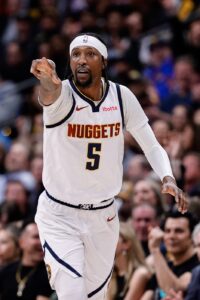
Caldwell-Pope has always been valued for his three-and-D skill set, but he bounced around the league a bit before arriving in Denver in 2022 and never secured the sort of lucrative long-term deal that matched up with his on-court contributions. Over the past two seasons with the Nuggets, he has knocked down 41.5% of his three-pointers and served as one of the team’s go-to perimeter defenders, winning his second championship in 2023 (he also won one in 2020 with the Lakers). He’s on the wrong side of 30, but I still expect him to get the largest contract of his career this offseason — whether that will happen in Denver, where the Nuggets might have to surpass the second tax apron to bring him back, is an open question.
12. Miles Bridges, F, Hornets
If we were evaluating Bridges based solely on his on-court performance, he’d rank as high as sixth on this list. But any team considering signing him will have to account for his off-court history, which includes multiple domestic violence allegations — one of those cases was eventually dropped, while the other resulted in Bridges pleading no contest (accepting punishment without formally admitting guilt). It’s possible Bridges will be a model citizen going forward, but a lucrative long-term contract doesn’t come without risk and would be a tough sell to many fans. With that in mind, I’m hesitant to project the kind of $120MM+ contract he appeared on track for during his first foray into free agency in 2022, unless it comes with significant protections for the team.
13. Isaiah Hartenstein, C, Knicks
After an up-and-down first season in New York, Hartenstein had a career year in 2023/24, stepping in as the Knicks’ starting center following Mitchell Robinson‘s ankle injury and playing strong defense while setting new career highs in several categories, including rebounds (8.3), assists (2.5), and steals (1.2) per game. Like Monk, Hartenstein only has Early Bird rights, so the Knicks’ offer can’t exceed approximately $72.5MM over four years. It seemed unlikely just a few months ago that the big man would get anything close to that, but the center market will be relatively sparse, especially if Claxton re-signs with the Nets, and one report suggested a deal in the $80-100MM range isn’t out of the realm of possibility for Hartenstein.
14. Klay Thompson, G/F, Warriors
Prior to the ACL and Achilles tears that sidelined him for two full seasons from 2019-21, Thompson was a career 41.9% three-point shooter and a strong defender. Since the injury, he’s lost a step on defense and his three-point rate has fallen off a little, but he has still never registered a full-season 3PT% below 38.5% and he averaged 17.9 points in just 29.7 minutes per game in 2023/24. If the Warriors aren’t prepared to give the 34-year-old a two- or three- year contract in the range of $25MM per year, I wouldn’t be surprised if a cap-room team seeking a shooter with championship experience (e.g. the Magic, Thunder, or Sixers) swoops in with an aggressive short-term offer.
15. Tyus Jones, G, Wizards
A nine-year veteran, Jones has never been considered a star, but he’s one of the NBA’s most underrated point guards, and he proved in 2023/24 that he can maintain his strong per-minute numbers in a starting role. His .489 FG%, .414 3PT%, 12.0 PPG, and 7.3 APG were all career highs, and no one in the league is better at protecting the ball (his 1.0 turnover per game in ’23/24 was the worst mark of his career). Having held onto him at the trade deadline, the Wizards presumably recognize the value of having Jones run the show on a young, rebuilding roster and will look to re-sign him this summer. But I expect him to draw significant interest from playoff teams at the full mid-level ($12.9MM) and potentially well above that.
Read more
16. Tobias Harris, F, Sixers
A five-year, $180MM contract – along with a (perhaps unfair) perception that the Sixers chose him in 2019 over Jimmy Butler – hasn’t always made Harris the most popular player in Philadelphia, but his production over his last five-and-a-half seasons as a 76er has been stellar (17.6 PPG, 6.6 RPG, 3.1 APG, .488/.369/.856 shooting). Although the two sides appear likely to go their separate ways this summer, Harris should have no problem finding another team willing to give him a nice multiyear deal — he’s still a productive, efficient scorer, and while he’s not an elite defender, he has the size to match up with a wide variety of wings and forwards.
17. Patrick Williams, F, Bulls (RFA)
Williams reportedly turned down a four-year rookie scale extension worth about $64MM prior to the start of the 2023/24 season. He was subsequently limited to just 43 games before undergoing season-ending foot surgery, and even prior to the injury he didn’t take a major step forward — his numbers across the board were similar to or slightly down from his ’22/23 marks, and the Bulls constantly had to encourage him to be more aggressive on offense. Williams, who is still just 22 years old, is a career 41.0% three-point shooter and a solid defender. While the Bulls ideally would’ve liked to see more growth from the former No. 4 overall pick across his four NBA seasons, his upside remains tantalizing, so they won’t want to let him get away.
Update: Williams reportedly intends to sign a five-year, $90MM contract with the Bulls.
18. Gary Trent Jr., G, Raptors
The last time Trent was a free agent, in 2021, he signed a three-year contract worth $17MM annually. Since then, he has averaged 16.4 PPG with a .382 3PT% across 207 regular season games, and while his defense is somewhat inconsistent, he’s opportunistic on that end of the court, averaging 1.5 steals per contest across those three seasons. Given that the salary cap has risen by 25% since Trent last reached free agency and he’s still just 25 years old, I have to think he’ll be able to match or exceed his previous deal.
19. Royce O’Neale, F, Suns
O’Neale is a solid but unspectacular wing who can hit an open three-pointer but will never be much of an offensive threat (his career high is 8.8 PPG). He’s in position to cash in this offseason though, because Phoenix has no means to replace him if he walks in free agency. That means the Suns, who hold his Bird rights, may be compelled to offer three or four years to ward off rival suitors. O’Neale has never earned an eight-figure annual salary — I expect that to change beginning in 2024/25.
Update: O’Neale reportedly intends to sign a four-year, $44MM contract with the Suns.
20. Isaac Okoro, F, Cavaliers (RFA)
Okoro, who was drafted one spot behind Williams in the 2020 lottery, finds himself in a similar position as the two forwards enter restricted free agency. Okoro has flashed real three-and-D upside but has never contributed enough offensively to become an above-average starter. This past season was his best, as he bumped his 3PT% up to 39.1%, but he’s still not shooting all that much (3.1 three-point attempts per game) and his dud of a postseason (5.5 PPG on .357/.257/.778 shooting) did nothing to boost his stock heading into the offseason. The 23-year-old probably hasn’t finished developing, so he could draw interest from younger teams looking to put pressure on the Cavs, but a long-term contract worth much more than $13-15MM annually would come with some risk.
21. Caleb Martin, F, Heat
Martin’s numbers (10.0 PPG, 4.4 RPG, 2.2 APG) don’t jump off the page, but he’s the type of connecting piece that every team could use. The 28-year-old wing can help out in a lot of different ways, including as a shooter (.368 3PT% during his three years in Miami) and switchable defender. His versatility is a major selling point, as he often served as a de facto power forward for the Heat despite fitting better as a two or three. I anticipate Martin being a popular target for contending teams seeking a rotation player with the mid-level exception. Miami, which has tax and apron concerns, could be hard-pressed to keep him if the bidding gets too high.
22. Derrick Jones, F, Mavericks
Jones was on the free agent market for over a month last summer before eventually signing a one-year, minimum-salary deal with Dallas. It’s safe to say that won’t happen again. Jones was the starting small forward for the Western Conference champions, serving as the Mavericks’ go-to perimeter stopper and doing enough on offense to ensure opposing defenses couldn’t ignore him (his 8.6 points and 1.1 made three-pointers per game were career highs, as was his .343 3PT%). The Mavs will only hold his Non-Bird rights, preventing them from offering more a salary worth more than 20% above Jones’ minimum unless they use another exception, such as the mid-level or bi-annual.
23. Isaiah Joe, G, Thunder
The Thunder could have exercised an extremely team-friendly option worth about $2.16MM on Joe in order to have him under contract at a bargain price for 2024/25. Instead, they declined that option to make him a free agent. While Joe will technically be unrestricted, it’s a safe bet that Oklahoma City knows what it will take to re-sign him and intends to give him that deal after using the rest of its cap room on other moves. Since they hold his Early Bird rights, OKC can go up to an estimated $56MM+ over four years for Joe. It might take close to that amount for a player who has made 41.2% of his three-pointers and played solid defense in the Thunder’s rotation for the past two seasons.
24. Buddy Hield, G, Sixers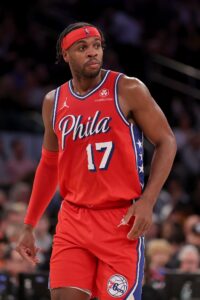
Hield is one of the most prolific shooters in NBA history — he ranks 22nd on the league’s all-time list of made three-pointers and should be knocking on the door of the top 15 by the end of next season. As impressive as his shooting numbers are, however, his game doesn’t really stand out in many other areas. After seven seasons without a postseason appearance, Hield got an opportunity to play for two playoff teams this season, but his scoring average in both Indiana and Philadelphia was well below his career rate. It also doesn’t reflect well on him that he was basically dumped for non-rotation players and draft picks by the Pacers, then barely saw the court in the Sixers’ first-round series vs. New York. His shooting will keep getting him paid, but I’m skeptical that he’ll match his previous four-year, $86MM contract (which included another $20MM in incentives).
25. Jonas Valanciunas, C, Pelicans
Valanciunas is one of the NBA’s best rebounders and is a talented scorer around the basket and out to the mid-range. But the veteran center hasn’t been able to reliably extend his jump shot out beyond the arc, and he’s never been athletic enough to provide elite rim protection or to defend out to the perimeter, limiting his value to certain teams and in certain matchups. Valanciunas has been paid between $14-17MM for each of the past eight seasons and a short-term deal on the lower end of that range would be fair, though if he doesn’t re-sign with the Pelicans, the market may force him to take a pay cut.
26. Simone Fontecchio, F, Pistons (RFA)
One of two wings Detroit acquired at the trade deadline as potential keepers (Quentin Grimes was the other), Fontecchio impressed in his first 16 games as a Piston, averaging 15.4 PPG on .479/.426/.846 shooting for his new team after starting 34 of 50 games earlier in the season for the Jazz. For someone with just two NBA seasons under his belt, the Italian forward is older than you’d think (29 in December) due to a lengthy pre-NBA run overseas, but he’s still very much in his prime and his extensive international experience could actually be a point in his favor for a young Pistons team seeking stability. An annual salary of $10MM+ could be attainable for Fontecchio.
27. Obi Toppin, F, Pacers (RFA)
A starter until Christmas, Toppin was moved to the second unit in an effort to improve the Pacers’ defense, then continued to come off the bench after the team traded for Siakam. Still, it was a career year for the former lottery pick, who cracked double-digit scoring (10.3 PPG) for the first time while bumping his shooting efficiency to new heights (.573 FG%, .403 3PT%). Toppin, who remained a reliable rotation piece throughout three playoff series, may not project as a starter long-term, but he looks like at least a high-level reserve for the foreseeable future.
Update: Toppin reportedly intends to sign a four-year, $60MM contract with the Pacers.
28. De’Anthony Melton, G, Sixers
Melton is one of the league’s most underrated players, a versatile guard who can capably defend multiple positions, knock down three-pointers, set up teammates, and take care of the ball. However, a back injury sidelined him for nearly the entire second half of the season, muddying his value ahead of unrestricted free agency this summer. If he had stayed healthy, I would’ve viewed Melton as a lock to earn at least the full mid-level, but any team looking to sign him will want to check out his medicals before committing.
29. Luke Kennard, G, Grizzlies
Memphis declined Kennard’s $14.8MM team option for tax-related reasons, but he shouldn’t have to take a major pay cut in free agency. One of the NBA’s best three-point shooters, the 28-year-old wing has made at least 44.6% of his attempts from beyond the arc in each of the past four seasons, including 45.0% in 2023/24. He’s also a decent secondary play-maker on offense, with 3.5 assists in 25.6 minutes per game this past season. Kennard isn’t a great defender, which will cap his potential earnings, but you can’t do much better if you’re looking for a shooter.
30. Kyle Anderson, F, Timberwolves
Anderson’s inconsistent three-point shot makes him an awkward fit alongside other players who don’t space the floor, but he’s a solid, switchable defender, a good secondary ball-handler, and a heady player who could have a role on any contender. He signed a two-year, $18MM contract in 2022 and is still just 30 years old, so he should be able to negotiate a similar contract or something even more lucrative. A return to Minnesota may not be in the cards though, given the rising cost of the Timberwolves’ roster, which projects to be in second-apron territory even without a new deal for Anderson.
31. Kelly Oubre, F, Sixers
Oubre’s value is hard to pin down. A year ago, after averaging an inefficient 20+ points per game with the Hornets, he accepted a minimum-salary contract. His shooting percentages in 2023/24 (including a .535 TS%) looked nearly identical to his ’22/23 marks (.534 TS%), and while playing an important role on a good team did more for his reputation than piling up counting stats on a bad team did, the Sixers were better when he was off the court (+6.9 net rating) than when he was on it (+0.1). Oubre has some appeal as a wing with size who can score and hold his own defensively, but I’m not totally convinced he’ll have teams beating down his door eager to give him a big raise.
32. Gary Harris, G, Magic
There’s no doubt that Denver ultimately came out ahead in 2021’s Aaron Gordon trade, but Harris – who was sent from the Nuggets to the Magic in that deal – has been a quietly effective role player since arriving in Orlando, knocking down 39.2% of his three-point attempts and starting 118 of 183 games over three-and-a-half seasons. Harris, who is still just 29 years old, hasn’t made less than $13MM in a season since 2017/18, though that streak isn’t a lock to continue — his 6.9 points and 24.0 minutes per game were his lowest averages since his rookie year.
33. Naji Marshall, F, Pelicans
A former undrafted free agent, Marshall is a valuable glue guy whose improving three-point shot (38.7% in 2023/24) would boost his value in free agency if teams believe that success is sustainable. The Pelicans had a +8.7 net rating when Marshall was on the court during the regular season (+2.5 when he sat) and that trend continued in the play-in tournament, where he was a team-high +17 in New Orleans’ play-in win over Sacramento. He was also one of the few Pelicans who looked good in a four-game sweep at the hands of Oklahoma City, knocking down 40.% of his threes as a regular rotation player during that series.
34. Malik Beasley, G/F, Bucks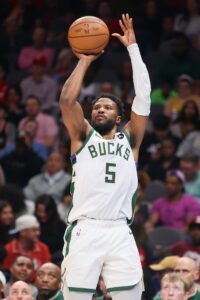
Beasley started 77 games for one of the East’s top three regular season teams and converted 41.3% of his three-point tries, increasing his career mark to 38.5% on a high volume (5.9 attempts per game). The 27-year-old isn’t a great defender, but a team that needs floor spacing should be willing to live with that, especially if the price is closer to $10MM than $20MM per year.
35. Monte Morris, G, Timberwolves
Health issues slowed down Morris during the 2023/24 season, limiting him to 33 regular season games and causing his numbers to crater across the board. But he had been one of the NBA’s best backup point guards and a capable fill-in starter before that, having averaged 10.5 points and 4.0 assists per game on .480/.392/.829 shooting for Denver and Washington from 2018-23. Assuming he’s back to 100% for the fall, Morris should be a safe investment for a team seeking a player capable of leading its second unit.
36. Haywood Highsmith, G/F, Heat
Highsmith’s 6’7″ frame and seven-foot wingspan allow him to match up with a wide range of opposing scorers. And while his defense is really his calling card, his efforts to become more of an offensive threat have paid off, with his three-point percentage increasing in each of his NBA seasons (it was up to 39.6% this past year). The 27-year-old appears to be the latest in a long line of developmental success stories for the Heat. Now the question is whether Miami, which is facing a bit of a cap crunch, will be able to keep him or if he’ll get a more appealing offer from a rival suitor.
37. Precious Achiuwa, F/C, Knicks
Consistency has been an issue for Achiuwa, but he was given a chance to play meaningful minutes on an injury-plagued roster in New York and held his own against bigger frontcourt players, averaging 7.6 points, 7.2 rebounds, and 1.1 blocks in 24.2 minutes per game with the Knicks. Achiuwa is an intriguing small-ball center, since he’s athletic enough to switch onto quicker players. We’ll see how his market develops, since he won’t be the Knicks’ highest priority in free agency.
38. Moritz Wagner, C, Magic
Orlando turned down Wagner’s $8MM team option, but that was more a procedural move to maximize the club’s available cap space than a reflection of his value. While he’s not the star his brother Franz Wagner is, Moritz has become a reliable rotation center in Orlando. He has averaged double-digit points in each of the past two seasons, including a career-high 10.9 PPG on a career-best 60.1% shooting percentage in just 17.7 MPG in 2023/24. It wouldn’t be a surprise if Wagner ends up re-signing with the Magic on a deal that pays him around the same amount as the option the team declined.
39. Aaron Wiggins, G, Thunder (RFA)
Wiggins has seen his minutes per game decline in each of the past three seasons through no fault of his own. The Thunder’s roster has gotten much deeper during that time, creating less playing time for non-stars like Wiggins, but his per-minutes numbers and shooting percentages have markedly improved in each of his NBA seasons so far — he posted an impressive .562/.492/.789 shooting line in 2023/24. Oklahoma City declined his team-friendly option to make him a restricted free agent and will presumably re-sign him to a longer-term deal after using up its cap room.
40. Goga Bitadze, C, Magic
It’s worth reiterating that the market for centers is relatively weak this summer. That means a player like Bitadze – who is entering his age-25 season, made 33 starts for a playoff team, and hit a career-high 60.3% of his field goals while blocking 1.2 shots in just 15.4 minutes per game – could be a popular target once the top two or three big men are off the board. The Magic are in a good spot to re-sign Bitadze if they want to, since his cap hold is only about $2MM. Orlando can keep that hold on its books, use up all its remaining cap room, then go over the cap to sign him for more than $2MM.
41. Nicolas Batum, F, Sixers
After signing a five-year, $120MM contract in 2016, Batum was considered overpaid and overrated, but the pendulum has swung back the other way in recent years as he has earned between $8-12MM per season. A jack-of-all-trades, Batum can handle the ball, knock down three-pointers, and use his 6’8″ frame effectively on defense. He’ll turn 36 in December and there were rumors a year ago that he might consider retirement after the Paris Olympics, but if he wants to continue his career, the French forward will continue to draw interest from contenders.
42. Andre Drummond, C, Bulls
Like Batum, Drummond is a player who is viewed more favorably now that he’s not making nearly as much money. A former two-time All-Star, Drummond has been negatively impacted by the game’s faster pace and the focus on outside shooting. He now finds himself cast as more of a backup or situational player than a starting center, but he’s one of the league’s best backups. No one rebounds like Drummond, who averaged an eye-popping 9.0 boards in just 17.9 minutes per game last season, and he’s an effective rim-runner in the pick and roll. He has gone from maximum-salary player to minimum-salary player in recent years, but probably deserves a bit of a pay bump after a solid couple seasons in Chicago, where he didn’t complain about playing second fiddle to Nikola Vucevic.
43. Markelle Fultz, G, Magic
Few free agents in the 2024 class are trickier to get a handle on than Fultz, a former No. 1 overall pick who is still just 26 years old. Injuries have limited him to 234 total regular season games since he was drafted in 2017, but his performance in 2022/23 as Orlando’s starting point guard was legitimately impressive (14.0 PPG, 5.7 APG, 3.9 RPG, 1.5 SPG, .514 FG%). Unfortunately, he took a step back this past season in terms of both availability and production, and between his injury history and his shortcomings as a shooter, it’s unclear how popular he’ll be on the open market. His pedigree as a top prospect and his ability to make a defensive impact are both points in his favor.
44. Jalen Smith, F/C, Pacers
Smith was one of the beneficiaries of the Pacers’ high-flying offense led by Tyrese Haliburton, setting new career highs in points per game (9.9), field-goal percentage (59.2%), and three-point percentage (42.4%). Smith holds a $5.4MM player option for 2024/25, but is rumored to be leaning toward opting out. He shouldn’t necessarily expect a significant raise on that option salary, but he shouldn’t have much trouble getting another multiyear deal in about the same range.
45. Saddiq Bey, F, Hawks
Even before Bey’s season ended early due to torn ACL, it was an up-and-down year for the fourth-year forward, whose three-point percentage was an ugly 31.6% on 5.7 attempts per night and whose performance on defense was inconsistent. That ACL injury, which occurred in March, further complicates his free agency, since there’s a good chance he’ll miss most or all of the 2024/25 season. Bey’s qualifying offer is worth nearly $8.5MM, and a worst-case scenario for the Hawks would be for him to accept that QO, spend all of ’24/25 rehabbing, then sign elsewhere next summer as an unrestricted free agent. If he’s still in Atlanta’s long-term plans, the Hawks may look to negotiate a multiyear deal before other clubs get a chance to talk to him.
46. Cedi Osman, F, Spurs
After six seasons in Cleveland, Osman essentially served as salary-matching fodder in the sign-and-trade deal that sent Max Strus to the Cavaliers last July, but he survived a preseason roster crunch in San Antonio and played regular minutes all season for the Spurs, making a career-high 38.9% of his shots from beyond the arc. At age 29, Osman is still in his prime and can clearly continue to be an NBA rotation player, but it remains to be seen how robust his market will be after he spent the year playing for a lottery team.
47. Xavier Tillman, C, Celtics
Although Tillman’s playing time dropped off following the midseason trade that sent him from Memphis to Boston, I don’t think the new situation damaged his stock entering unrestricted free agency. Even if he didn’t play a major role for the Celtics, the fact that the 2024 champions gave up assets to acquire him and turned to him a few times during their title run reflects favorably on Tillman. Still just 25 years old, the big man is a reliable defender in the middle and is playoff-tested, having made 12 starts across three postseasons in Memphis even before he joined the C’s.
48. Eric Gordon, G, Suns
Gordon could have gotten more than the veteran’s minimum as a free agent a year ago, but knew he’d play a major role and have a chance to contend in Phoenix, so he accepted a two-year minimum deal from the Suns that included a second-year player option. Sometimes veterans can be pigeonholed as minimum-salary players after they first settle for that amount. Still, Gordon played well enough in 2023/24 (11.0 PPG, .378 3PT%) that he could probably do a bit better on the open market if he opts out, even at age 35.
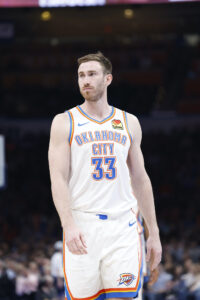 49. Gordon Hayward, F, Hornets
49. Gordon Hayward, F, Hornets
Even though the Hornets finished 36 games behind the Thunder in the standings, Hayward might have preferred to simply finish the season in Charlotte, where he was starting and seemed comfortable in his role. A trade to Oklahoma City seemingly put the veteran forward in a position to play an important complementary role on a young upstart contender, but the fit was awkward from the beginning, and when the playoffs got underway, the 34-year-old was out of the Thunder’s rotation. Hayward scored a grand total of 0 points in 46 postseason minutes, not exactly making a convincing case for one more big contract.
50. Max Christie, G, Lakers (RFA)
There are many veterans with far more accomplishments on their résumés – and more value in the short term – than Christie, but many of those vets will end up signing for the minimum. I don’t think that will be the case for Christie, who is 21 years old and has flashed some real promise in his modest role for the Lakers. I wouldn’t expect him to get the same kind of three-year, $31MM contract Talen Horton-Tucker got when he reached restricted free agency entering his age-21 season three years ago, but Miles McBride‘s three-year, $13MM extension from this past December seems like a fair point of reference for the Lakers guard.
Update: Christie reportedly intends to sign a four-year, $32MM contract with the Lakers.
Bumped out of the top 50 for new additions:
51. Taurean Prince, F, Lakers
Coming into the 2023/24 season, Prince had been a reserve for three straight years, so it came as a bit of a surprise that he started 49 games for the Lakers, who seemingly had better options for that spot. But the fact that he ended up in the starting five so often speaks to the veteran forward’s ability to earn the trust of his head coach. Prince would be better cast as a seventh or eighth man who can play a three-and-D role in the second unit. He made $4.5MM last season and could be in line for a modest raise.
52. Spencer Dinwiddie, G, Lakers
Dinwiddie signed a three-year, $54MM contract with the Wizards in 2021, then spent the those three years on five different teams. He was traded to Dallas in 2022, Brooklyn in 2023, and Toronto in 2024 before being cut by the Raptors and signing with the Lakers. The veteran point guard is still just 31 years old and is only one year removed from averaging 17.3 points and 6.5 assists per game across 79 contests for the Mavericks and Nets in ’22/23. However, his production and efficiency declined sharply this past season. After finishing the year on a minimum-salary contract in Los Angeles, will he be relegated to the vet-minimum market going forward, or will there be a team willing to bet on a bounce-back and offer him a little more than that?
Pre-free agency updates:




 49.
49. 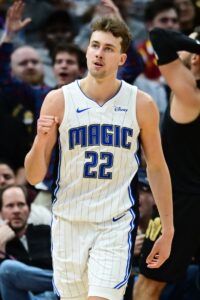 The good news for the Magic is that their young core is largely responsible for that surge up the standings. Orlando’s top three scorers in 2023/24 were
The good news for the Magic is that their young core is largely responsible for that surge up the standings. Orlando’s top three scorers in 2023/24 were 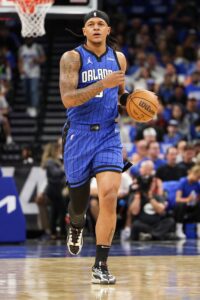
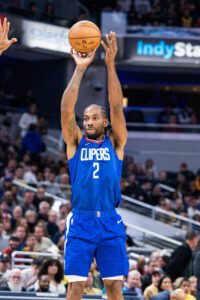
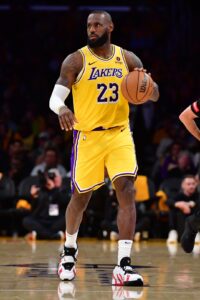 Prince is one of only two unrestricted free agents for L.A. in 2024, along with
Prince is one of only two unrestricted free agents for L.A. in 2024, along with 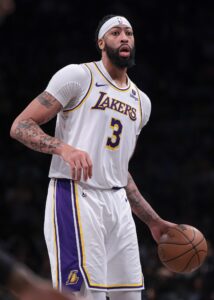
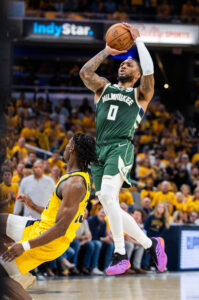
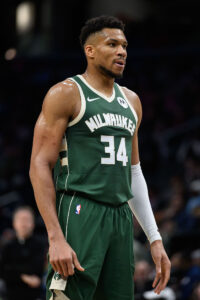
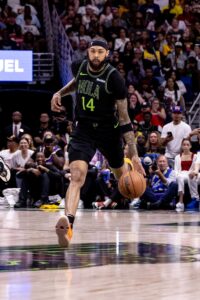 The Pelicans didn’t entirely avoid health issues in ’23/24, but they came about as close as they could realistically expect, with Williamson, Ingram, and McCollum each playing between 64 and 70 regular season games. A late-season knee injury limited Ingram’s effectiveness in the playoffs, and Williamson hurt his hamstring in the play-in tournament, sidelining him for the first-round series vs. the Thunder, but by that point, the Pelicans had gotten the extended evaluation period they’d hoped for, giving them a better idea of what they had.
The Pelicans didn’t entirely avoid health issues in ’23/24, but they came about as close as they could realistically expect, with Williamson, Ingram, and McCollum each playing between 64 and 70 regular season games. A late-season knee injury limited Ingram’s effectiveness in the playoffs, and Williamson hurt his hamstring in the play-in tournament, sidelining him for the first-round series vs. the Thunder, but by that point, the Pelicans had gotten the extended evaluation period they’d hoped for, giving them a better idea of what they had.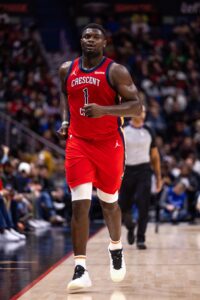
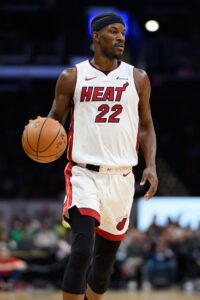 The most pressing question facing the Heat this summer is whether or not Butler will still be on the roster on opening night. A breakup would be a bit of a surprise, given that the past five years have seemed like a near-perfect marriage between one of the NBA’s most competitive stars and a franchise that prides itself on its hard-working culture.
The most pressing question facing the Heat this summer is whether or not Butler will still be on the roster on opening night. A breakup would be a bit of a surprise, given that the past five years have seemed like a near-perfect marriage between one of the NBA’s most competitive stars and a franchise that prides itself on its hard-working culture.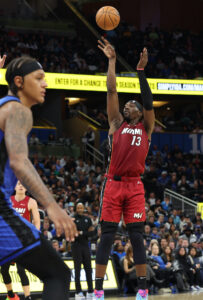
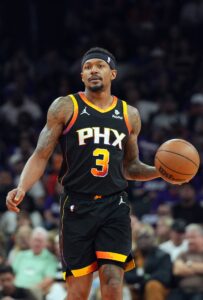 The moves left Phoenix with a top-heavy roster headed by three players who will earn a combined $150MM+ in 2024/25 when
The moves left Phoenix with a top-heavy roster headed by three players who will earn a combined $150MM+ in 2024/25 when 